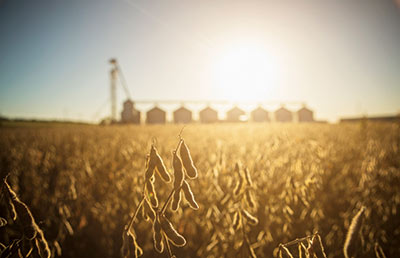How Much is the Co-op Deduction Really Worth?

We have seen multiple copies of letters floating around touting the tax benefit of the new Section 199A for delivery of grain to a co-op based on dollars per bushel saved. Remember, in order to get this new deduction, you must both sell to the co-op AND be a patron of the co-op. If you are not a patron, you do not receive the extra co-op Section 199A deduction.
A simple way of looking at the savings to the farmer is to take their tax bracket and multiply it by 20%. For example, if the farmer is in the 35% tax bracket, the maximum savings is 7%. However, if the farmer does not sell to the co-op, they will likely qualify for the regular Section 199A deduction of 20% of net farm income, so the likely tax savings due to selling to a co-op is simply 80% of the maximum number. In the case of a farmer in the 35% tax bracket, it would be equal to 5.6%. He farmer growing corn would then like to see how much cents per bushel this equates to. We are providing a simple chart that shows these savings assuming a farmer sells the crop for $3.50 as follows:
We thought it would be good to also run some analysis and try to determine what this “actual” per bushel savings might be based on a farmer trying to get their taxable income to zero using the following assumptions:
- A farmer has net farm income AND taxable income of $1 million, $500,000 and $100,000,
- He can sell corn for $3.50 per bushel,
- He is trying to limit his taxable income to zero with the Section 199A co-op deduction,
- He is a Schedule F farmer.
Here is a chart showing the results:
Line 1 is simply the taxable income of the farmer
Line 2 is the number of bushels at $3.50 per bushel needed to get a Section 199A co-op deduction to complete offset taxable income. For example, 1,428,571 bushels times $3.50 is $5,000,000 times 20% equals $1 million which will bring taxable income to zero.
Line 3 shows the amount of income tax owed if no Section 199A deduction was allowed.
Line 4 shows the tax assuming that the farmer would qualify for the regular Section 199A deduction which is 20% of net Schedule F income limited to 20% of taxable income. In the case of the $1 million farmer, his tax would be calculated on the basis of $800,000 of taxable income. This is the maximum tax that can be saved by the farmer selling to the co-op versus a non-cooperative sale.
Line 5 simply divides the savings on Line 4 into the number of bushels on Line 2 to arrive at the absolute maximum savings per bushel for the farmer.
Line 6 determines the amount of savings per bushel if the farmer delivers an extra 50% of bushels to the co-op. In this case, his savings per bushel will decrease since he is getting the same amount of net deduction. In the $1 million example, if the farmer delivers and extra 714,285 bushels, his gross Section 199A deduction increases to $1.5 million, but he can only deduct $1 million.
Line 7 shows the savings per bushel if the farmer’s net taxable income ends up being 50% less than planned due to various other deductions, etc.
As you can see from the table, the net savings to the farmer ranges from a low of 3 cents to a high of 17 cents. The actual savings is likely somewhere in the middle. Plus, this table does not show the actual bottom line tax still owed by the farmer due to self-employment tax. The Section 199A deduction does not reduce self-employment income, therefore, the farmer will still owe SE tax which will be about $15,000 for the $100,000 farmer up to about $52,000 for the $1 million farmer. Once you factor in these taxes, the actual savings per bushel will go down since the farmer could reduce this tax by perhaps buying additional equipment, etc.
Remember also to factor in differences in price offered by the co-op versus a non-co-op, and cost differences such as transportation. A farmer really only has an incentive to deliver bushels to a co-op up to the point where his tax savings per bushel is greater than additional return via increased price or reduced transportation or storage costs by delivering to a non-co-op. Once that point is reached, the farmer should sell to whoever offers the best net price since the co-op will no longer deliver any additional “tax savings”.
This example has been based upon our interpretation of the actual new Code Section 199A. We have not seen IRS regulations and until we do, this example could change and it could be material.
We will keep you posted.
Paul Neiffer is a certified public accountant and business advisor specializing in income taxation, accounting services, and succession planning for farmers and agribusiness processors. Paul is a principal with CliftonLarsonAllen in Walla Walla, Washington, as well as a regular speaker at national conferences and contributor at agweb.com. Raised on a farm in central Washington, he has been immersed in the ag industry his entire life, including the last 30 years professionally. Paul and his wife purchase an 180 acre ranch in 2016 and enjoy keeping it full of animals.



Paul, what qualifies as a co-op?